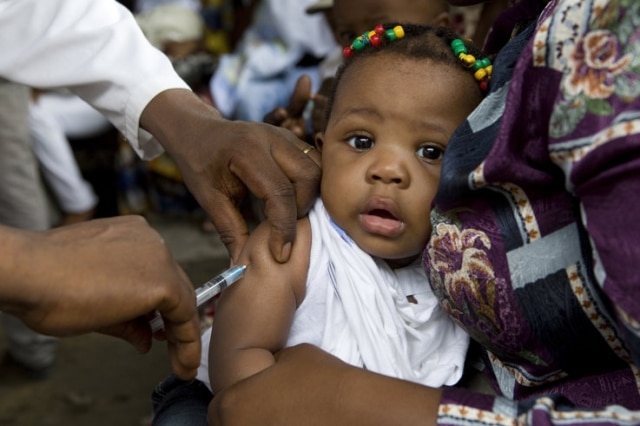Topic Content:
- Text: New Concept English Book 1
- Title: Immunisation (pages 69 – 70)

Immunisation:
Most diseases are infectious, that is, they can be passed from one person to another. Scientists study the structure, mode of life, and life cycle of organisms responsible for transmitting diseases. They also study the method of transmission of diseases. Knowledge gained from these studies helps scientists to work out ways of preventing the spread of these diseases and of protecting people from contracting them. One universal method of preventing diseases is immunisation.
Immunisation is a method of preventing diseases by injecting or taking into the body specially treated disease-causing organisms or their products. When such materials enter the human body, the body reacts as if the disease-causing microbesMicrobes are organisms that are too small to be seen without using a microscope. They include organisms like bacteria, archaea, and single-cell eukaryotes (organisms whose cells have a nucleus e.g. amoeba... More are actually present, but the person does not fall ill. The body produces substances called antibodies, which are carried in the blood. The antibodies destroy the disease-causing microbes or their harmful products. Excess antibodies remain in the blood and if the individual comes in contact with any of the given disease organisms, the antibodies stop the disease from developing.
Children in Nigeria are usually immunised against seven diseases that commonly cause preventable death. These are poliomyelitis, measles, tuberculosis, tetanus, yellow fever, whooping cough and diphtheria.
At a simple level, the terms vaccination, inoculation, and immunisation may be used to mean the same thing. Experts, however, make a clear distinction between them. Vaccination involves making some cuts on the skin with a sharp knife or razor before introducing the treated, weakened disease organisms through the cuts. Inoculation usually involves injecting the treated organisms into the body. Immunisation covers all methods of introducing treated, weakened, disease-causing organisms into the body, including introduction by mouth.
Immunisation of the child begins during pregnancy. The mother-to-be is usually given tetanus toxoid vaccine at the antenatal clinic. The first tetanus toxoid vaccine is normally given at 20 weeks and the second at 24 weeks.
What kind of knowledge helps scientists to prevent the spread of diseases? Most diseases are infectious that is, they can be passed from one person to another. What is a universal method of disease prevention?
Questions & Answers:
You are viewing an excerpt of this Topic. Subscribe Now to get Full Access to ALL this Subject's Topics and Quizzes for this Term!
Click on the button "Subscribe Now" below for Full Access!
Subscribe Now
Note: If you have Already Subscribed and you are seeing this message, it means you are logged out. Please Log In using the Login Button Below to Carry on Studying!



Responses